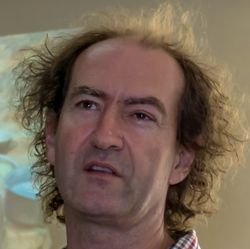Curved Channel Flows
Hydrodynamics of grit moving round a curved channel
When water passes round a bend in a channel, secondary currents are induced (due to centrifugal force) which means that any particles moving along the bed of the channel are pushed to the inside of the bend. The aim of this project is to study the hydrodynamics of particles as they pass around a bend in an open channel by using a combination of physical scale and Computational Fluid Dynamics (CFD) modelling. This phenomenon can be employed, for example, to remove grit from wastewater entering treatment works by placing a sump at the inside of the bend without any significant loss in head to the process flow or space considerations to the treatment plant (Figure - Cross Flow Velocity Vectors and Longitudinal Contours on bend).

A physical model of an open channel with a bend in the laboratory has been constructed and preliminary studies have shown the process to be very efficient at removing grit particles down to 0.3mm diameter but the efficiency drops off rapidly for smaller particles. A mathematical model was then built in CFD and successfully calibrated to the results from the physical model. The mathematical model has then been used to optimise the channel and study different characteristics such as angle of bend, position of sump, flow rate etc.
This project is not only of relevance to the grit removal process at wastewater treatment plants, but also the general understanding of sediment transport in open channel flow, for example meandering in rivers, whereby erosion takes place on outside and deposition on inside of the bend. It is also an interesting use of CFD to attempt to model the liquid phase and also the solid phase concurrently.
Project coordinator

Prof Laurence Gill
Chair of Environmental Engineering
Email laurence.gill@tcd.ie Phone+353 1896 1047Biography
Laurence Gill is a Professor in Environmental Engineering in the School of Engineering, Trinity College Dublin. His research interests involve studying the fate and transport of both air and water-borne pollutants in the natural and built environment, as well as the development of passive treatment processes. Much of the work involves extensive field studies which are then used to develop mathematical models to gain further insight into the processes. Prior to joining at Trinity College in 1999, he spent several years working in the UK water industry on the design of water and wastewater treatment processes for urban populations.
